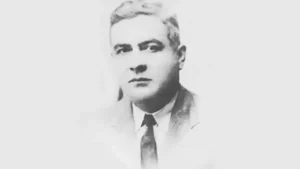Biography of Fray Juan de Jesús Zepeda y Zepeda
Fr. Juan de Jesús Zepeda was born in Tegucigalpa on November 20, 1808. His father was captain José Manuel Buenaventura Zepeda and his mother was María Vicente de Zepeda.
At the age of eleven, he went to Guatemala to begin his studies at the convent of San Francisco, where he took the Franciscan habit and made his religious profession in 1824.
After the religious orders were expelled from Central America in 1829, he was forced to emigrate to Chiapas, Mexico, where he completed his studies and was ordained a priest at the Franciscan convent in 1832. There, he dedicated himself to teaching and pastoral ministry.
In 1846, he returned to his homeland of Honduras to visit his family, after which he settled in El Salvador, where he held the position of professor of law at the University and served as secretary to Bishop Jorge Viteri y Ungo. Recognizing his profound knowledge and impeccable conduct, he was brought back to Tegucigalpa to teach Canon Law at the University.
The Franciscan superiors, also recognizing his vast learning and exemplary conduct, called him to Guatemala, where he became the guardian and later the provincial of the Province of the Most Holy Name of Jesus of Guatemala. He promoted education, taught philosophy and theology, and oversaw the completion of the beautiful and sumptuous church in Guatemala.
While serving as provincial, and due to his remarkable wisdom and holiness, Pope Pius IX appointed him in 1859 as the Bishop in partibus of Arindele. He was consecrated at the Church of San Francisco amidst the enthusiasm and joy of all the inhabitants of Guatemala, who held him in great esteem. On July 22, 1861, he was appointed as the Bishop of Comayagua, Honduras.
On April 1, 1862, Fr. Juan de Jesús Zepeda changed the name of the picturesque village known at the time as «La Marranera,» although others say it was called «Cimarrón.» Fr. Zepeda named it «Valle de Ángeles.»
Always zealous for the well-being of his flock, he tirelessly exhorted them in enlightening pastoral letters, eloquent talks, and sermons to live a Christian life and to abhor vice. Due to his fervent oratory, he was called «THE CHRYSOSTOM OF HONDURAS.» Around the year 1870, he went to Rome and attended the First Vatican Council. Between 1871 and 1872, he visited almost all the departments of his diocese.
He had to patiently endure the insults, contempt, and anonymous calumnies unjustly directed at him. However, the people, sensing his holiness, never doubted their shepherd. As a true and faithful son of St. Francis, he lived a life of poverty and dedicated his private life to study, prayer, and penance. After a long and painful illness borne with admirable resignation, the Honduran bishop and Franciscan passed away on April 20, 1885.
In addition to the two previous illustrious Honduran Franciscans, we can add the following:
The supreme government appointed an extraordinary envoy, Carlos Gonzalez, to the Holy See, to request, among other important matters, the transfer of Fr. Juan de Jesús Zepeda to the Bishopric of Comayagua.



